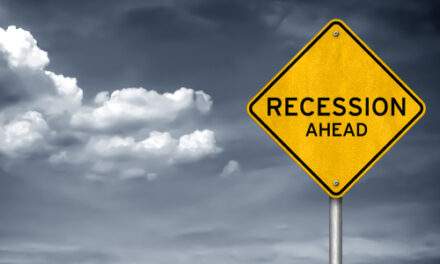Are we in a recession?
Depends on who you ask.
If you live and work in Washington, you probably don’t think so.
In July, Federal Reserve Chairman Jerome Powell said, “I do not think the U.S. is currently in a recession.” He reasoned that “there are too many areas of the economy that are performing too well.”
President Biden was more than happy to agree. He recently told reporters, “We’re not going to be in a recession.”
But many Americans outside the capital aren’t convinced. A recent CNBC survey found 57% of small business owners disagree. So do 45% of consumers. They think we’re already in a recession.
And one semi-technical indicator says they’re right.
This indicator has predicted the last two major downturns well before most economists. You won’t find it in any charting software. But anyone with an internet connection can look at it today.
And right now, it’s screaming “recession dead ahead”…
Does Google Know More Than the Fed?
This indicator is Google Trends, a tool that tracks Google search queries.
Might sound simple, but it’s predicted every major recession of the 21st century before the economists did.
Searches for “recession” first spiked in November of 2007. The next month, the National Bureau of Economic Research (NBER) declared the beginning of a recession.
The second spike began in June 2019. In the fourth quarter of that year, NBER economists concluded the economy peaked. And that was before the pandemic shutdowns.
Both times, ordinary people saw the slowdown coming. It took economists months to confirm what they already knew.
And now, searches for “recession” are at an all-time high.

Source: Google Trends
(Click here to view larger image.)
Meanwhile, Washington is busy redefining the term and shrugging off last quarter’s GDP numbers.
This isn’t surprising. Consumers and businesses feel the pain of contraction. Policymakers don’t. That’s why they cling to their statistics — employment, industrial production, and retail sales — to measure recession risk.
Ronald Reagan confronted this disconnect during his campaign for presidency in 1980. Unemployment was high. For many Americans, it felt like a depression. But policymakers insisted it was technically just a recession.
As Reagan explained:
“Let it show on the record that when the American people cried out for economic help, Jimmy Carter took refuge behind a dictionary.
Well, if it’s a definition he wants, I’ll give him one. A recession is when your neighbor loses his job. A depression is when you lose yours.”
This rings true today. Americans have jobs, but wages aren’t high enough to combat inflation. It feels like a recession, no matter what economists say.
Now, we can argue all day long about whether or not we’re in a recession. But when it comes to the market, the answer simply doesn’t matter…
Trade the Market You See
An official recession call shouldn’t matter to traders. Recession or not, stocks are moving.
Bear markets and recessions often go hand-in-hand. That’s bad news for buy-and-holders, but short-term traders thrive in bear markets. In fact, it’s one of the ideal times to trade.
The key is to trade the market you see — not what you think you should see.
For that, you need to focus on your indicators. Stick to your trading rules, no matter what the economy does.
With Mike Carr’s Greed Gauge, the trading rules are simple: Buy on green, sell on red.
See, the Greed Gauge monitors every single stock in the S&P 500. When it flips green on a ticker, you know other traders are about to rush in.
So you buy, and wait…
Until it flips red again. Then, you take your profits and run — before other buyers rush out.
Stocks move fast in bear markets. Right now, this is the best timing tool available to individual traders.
Don’t let politicians or your next-door neighbor influence your trading decisions. Trade the Greed Gauge. Your portfolio will thank you for it.
Regards, Amber HestlaSenior Analyst, True Options Masters
Amber HestlaSenior Analyst, True Options Masters










